6. 8 1⁄2 (1963)
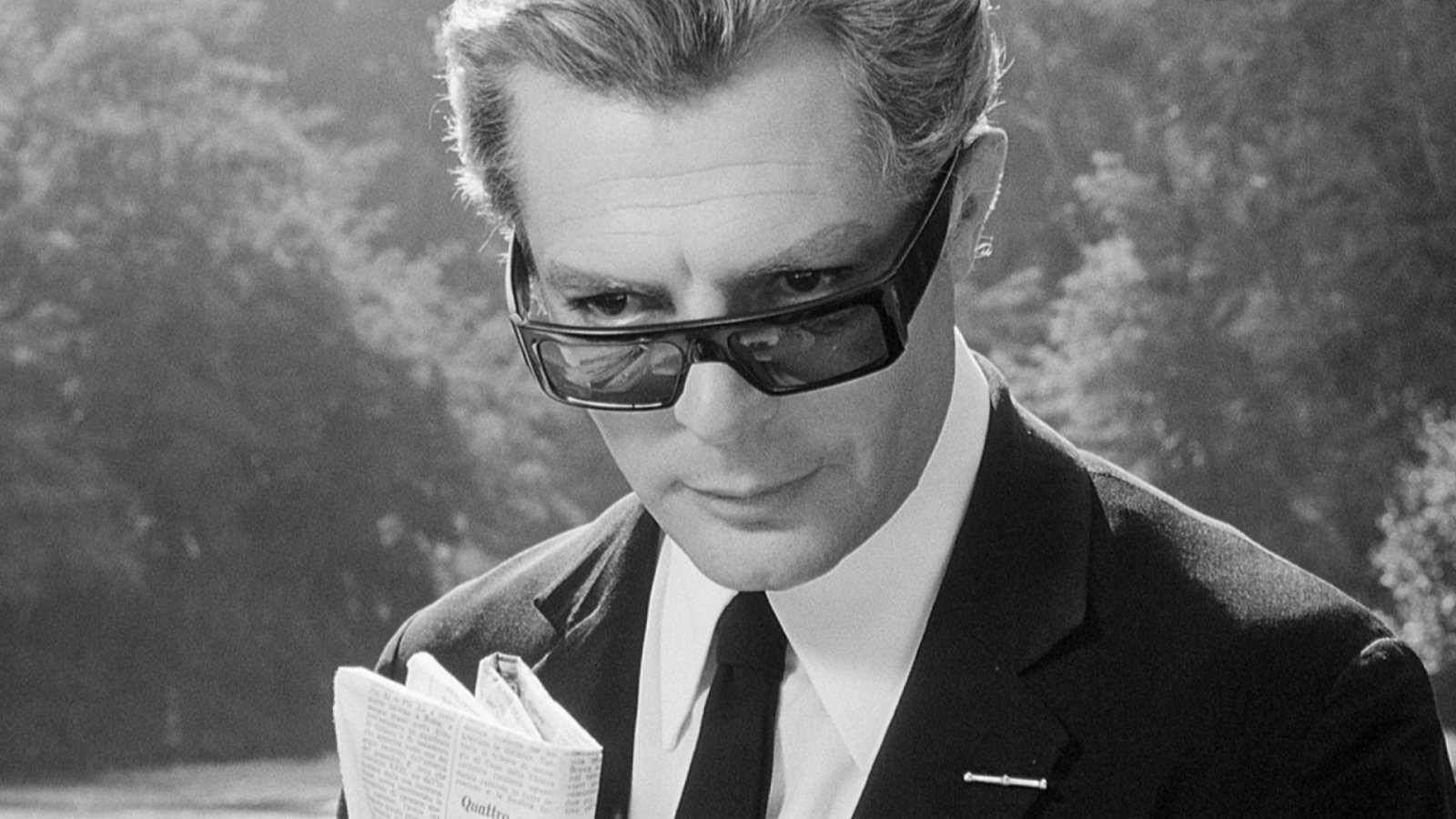
What’s the best way to conquer writers block? Well, by watching an Italian classic centred around the subject, of course. Or at least it was for lyricist Turner, who cited Federico Fellini’s masterpiece as the impetus for getting Tranquility Base off the ground, after confusion as to where to take the band’s sound after the immense success of their previous record.
And it was just this tale of Guido Anselmi, the stifled film director played Marcello Mastroianni, who wanders through his memories in an attempt to find inspiration, that got the Monkeys latest off to such a fantastic start from the opening words of the first track, ‘Star Treatment’.
‘I Just wanted to be one of The Strokes, now look at the mess you’ve made me make’, was a source of much debate among fans when it first hit their collective ears. Though The Strokes are a well known inspiration for the band since their inception, listeners tried to figure out how such an overt, fourth wall breaking confession fit into to this cosmic soundscape.
This sly nod is a sign that Turner, (if we are to assume the character of this track is the frontman himself) much like Guido, can’t quite grasp how quickly his creative life is passing him by, and ultimately feels irresponsible for letting these memories clash with new ones through a new and mature creative expression. Throughout 8 1⁄2, Anselmi’s memories begin to creep into an undetermined work, and faces from his past meld with new ones. It’s just like when Turner sings later in the track “I haunt you via the rear view mirror / On a long drive from the back seat’; he cannot get away from who he was, so must re-contextualise that version of him in order to move forward. Guido does this by taking his mind back to infancy through childhood memories, and Turner does it by taking the Arctic Monkeys back to their infancy through staples of the band’s beginnings.
Also needless to say, from track 9’s swirling organ riffs on ‘She Looks Like Fun’ to track 2’s velvety string swells on “One Point Perspective”, the instrumentation of the album could fit into Nino Rota’s score for this film seamlessly.
7. The Conversation (1974)
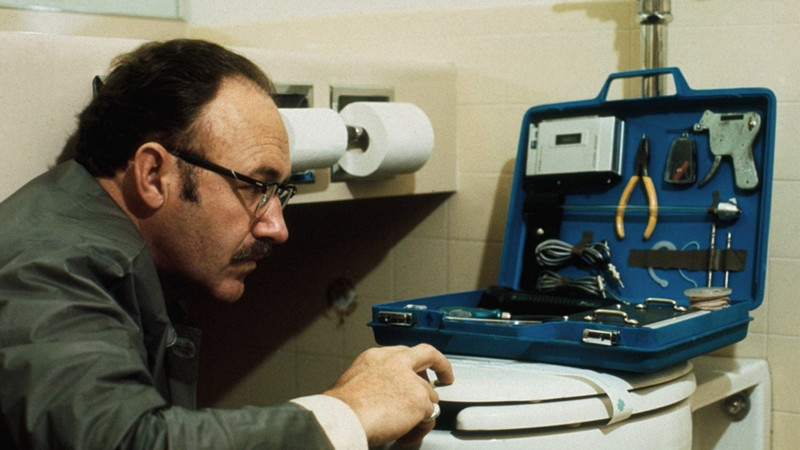
Fitting in with the prevalent thread of technologically based conspiracies, Francis Ford Coppola’s exercise in loneliness and secrecy was another selected for the Arctic Monkeys film festival, and it’s no wonder why. This mid-70’s classic is a fitting addition to Turner’s cinematic mood board for Tranquility Base in more ways than one.
Following Gene Hackman’s Harry Caul, a surveillance agent whose persistence on his own privacy is juxtaposed with his recordings of conversations for mysterious clients, it’s a slow burn that gradually reveals a murder conspiracy, all captured through Caul’s technology.
The main point of reference for Turner here was the use of technology as a character within the story. The film revolves around it, yet simultaneously vilifies it with the stark contrast to it’s enabler’s personal life, something that is alluded to on nearly every song in the Monkeys’ record here, most notably in the boldly titled “The World’s First Ever Monster Truck Front Flip”.
Perhaps the most technology centric entry, lines such as “You push the button and we’ll do the rest / The exotic sound of data storage / Nothing like it, first thing in the morning” are clear echoes of Caul’s vocation and trust in a world that he finds not only alienating but necessary, and even has a sly nod to Coppola himself by referencing another 70’s classic of his, Apocalypse Now, in the last part of the line.
This heavy reliance on evasive, relatively new and omnipresent machinery is something Tuner muses on in the same wavelength as Coppola, keeping a cool detachment from it while flagging it’s inevitable overuse and how it relates to humans, whether that be in San Francisco or a hotel on the Moon. This point is further brought home by the Monkeys’ emulation of the film’s excellent sound design within most of the keyboard and synthesiser sounds on the record, tuning those distinct mechanical sounds into the backdrop for Turner’s cryptic text.
Finally, though track 9, ‘She Looks Like Fun” tends to be more concerned with modern anxieties surrounding social media, it’s line “Dance as if somebody’s watching, cos they are” is a foreboding warning that suits Harry Caul’s worries and voyeuristic actions in The Conversation down to a tee.
8. L’Eclisse (1962)
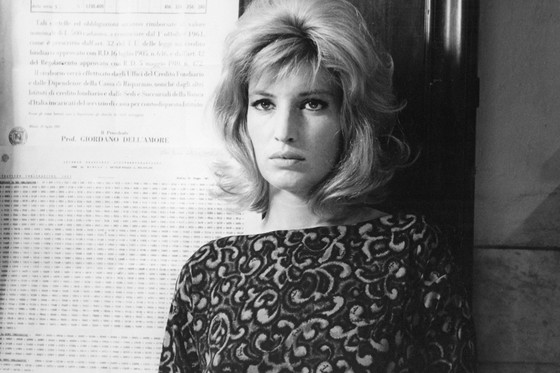
The second Italian arthouse film from the early 60’s on the list comes in the form of Antonioni’s final entry to his ‘Trilogy of Alienation’, suitably starring Alain Delon in the lead role. Another part of the Monkeys’ Tranquility Base film festival, it’s inclusion among the 70’s based and cosmically concerned films initially seems strange, but further examination reveals how closely knit the film and the album actually are.
Starting Delon as charming yet passive stockbroker Piero, Antonioni’s tortured romantic piece sees him meet the beautiful and frustrated Vittoria (Monica Vitti), whose recent split from her boyfriend sees her emotions run wild in their strained relationship. Featuring long passages of silence and revolutionary black and white photography, the seeds of Tranquility Base’s vision can easily be seen throughout the film.
It almost all boils down to Antonioni’s emphasis on alienation through the sparse, cold atmosphere he creates, that can be suitably described as ‘lunar’. From Rome’s EUR water tower being a key feature of the backdrop, a unique structure that looks incredibly similar to a UFO and was even memorably featured in 60’s sci-fi flick The Last Man On Earth, to Vittoria’s aimless wandering through empty parks of cracked concrete that could easily be mistaken for the lunar surface, imagining any song featured on the album as the soundtrack to these scenes makes for a perfect match. Even the key locations in ancient Roman architecture, such as both character’s apartment buildings and the stock exchange in Lazio feel somewhat otherworldly, and are eluded to by Turner in ‘American Sports’; “A montage of the latest ancient ruins”, using Antonioni’s re-contextualisation of outer space imagery to show the alienation of a dysfunctional relationship to inform his own lunar based tales.
Even the lack of sound during the final seven minutes of the film has an effect on the audience akin to an astronaut floating above the moon (or a lunar hotel on it), suspended silently over an incredibly sparse and seemingly lifeless environment, just like Piero and Vittoria’s relationship by the end of the story.
Both Tranquility Base and L’Eclisse so cleverly use this interstellar imagery to suit their own seemingly unrelated structures; a rock record and a romantic film.
9. Le Samouraï (1967)
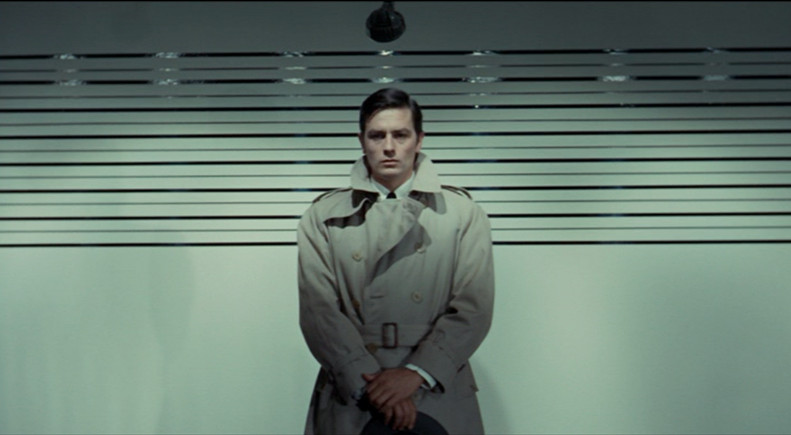
While Un Flic was another of the three Melville films that Turner reportedly found inspiration in alongside Le Cercle Rouge, this late sixties masterpiece by the French filmmaking legend is undoubtedly one of the most prominent influences on Tranquility Base. From sound to set design, Arctic Monkeys struck a brilliant balance between mid century European class and B-movie-esque pulp when this film entered the mix.
Alain Delon (making his fourth appearance on this list) stars as Jef Costello, an emotionless assassin who is caught up in an ever-spinning web of alibis, betrayal and persecution after he gets caught carrying out a high profile job. Probably Melville’s most famous work, it’s a neo-noir that simply ticks all the boxes, and one that clearly had a big effect on the Monkeys.
One only has to hear the opening 5 seconds of track 3, ‘American Sports’, to get a sense of the appreciation Turner has for this classic. With a similar organ motif to the one prevalent in the main theme for the film by François de Roubaix, he’s noted several times in interviews that this eerie arpeggio was in homage to the great composer. And it works brilliantly, reminding Melville fans of the intrigue, charm and cool atmosphere of the film as soon as it hits the ear, subsequently applying that to the record. Likewise, for none-Melville fans, this flourish of inspiration works to further situate them into the Monkeys’ vision; mid century elegance with a slice of mystery, something the organ part alone, in both the album and film, do so well.
The film’s effect on the record doesn’t stop there. Akin to Le Cercle Rouge but best exemplified here is Turner’s interest in the set design of the plot centric jazz club, Martey’s. Citing the film’s final shot, which hauntingly zooms out so far to fully reveal the nightclub set “almost to the point where you see the film lights”, the songwriter essentially recreates this for the aforementioned music video for track 6, “Four Out Of Five”. In a stylistically directed piece that features many a wink to classic cinema, the clip culminates with the band performing on a makeshift stage, surrounded by 70’s era film set lighting and audio visual equipment as they are taped for nearby monitors. Shot at Castle Howard in the band’s native county, this elegance juxtaposed with mid century era filmmaking iconography make it feel that the video could almost have been shot by Melville himself.
10. 2001: A Space Odyssey (1968)
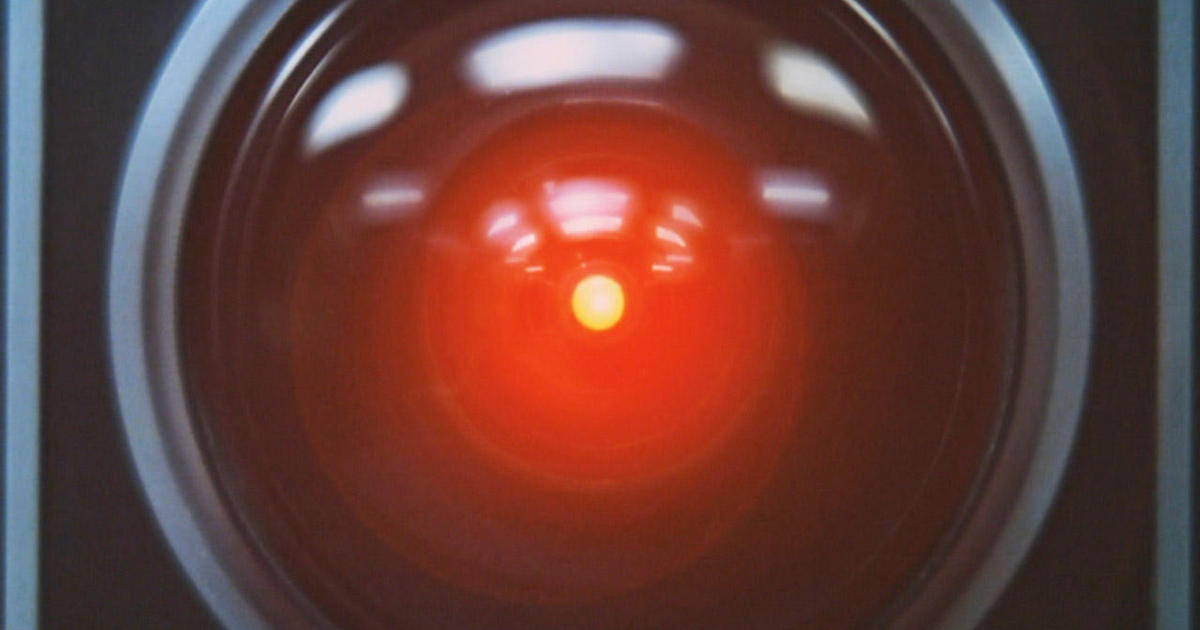
This is the big one. In fact, along with 8 1/2, this pick is the film that essentially helped birth the concept of the entire record. According to many interviews with the band regarding the now iconic artwork of Tranquility Base, as soon as they saw a pre production photo of the Lunar Hilton Hotel from the film, they began to imagine the possible contents of it’s lobby, specifically a model of the hotel itself, which inspired Turner to personally build the one featured on the cover. But, as always, this film reaches it’s influence much further and, along with other Kubrick works, into almost all facets of the record.
If you weren’t already familiar, this film industry changing, retro-futurist sci-fi masterpiece follows two astronauts on a trip Jupiter, accompanied by the increasingly self sufficient computer HAL, after uncovering a mysterious alien monolith structure. Managing to chart human evolution from the prehistoric age across millions of years, it’s existential sense of discovery paved the way for every intergalactic exploit to hit screens since, and the Arctic Monkeys, apparently.
Lead singles “Four Out Of Five” and “Tranquility Base Hotel & Casino” are perhaps the best examples. Lyrics in the former, such as “Cute new places keep on popping up / Around Clavius”, name dropping the lunar settlement featured in the film, are dead giveaways in a song that is structured as an advertisement for the titular hotel. In fact, it’s music video has been compared to another classic of Kubrick’s, The Shining, with very similar claustrophobic shot structures through winding hallways, and utilisation of a symmetrical ‘one point perspective’ technique, which is in fact the title of the album’s second track, a direct reference to both Kubrick and Wes Anderson, Turner has stated.
With the title track, Turner effectively takes on the role of the 2001 lunar Hilton-esque hotel receptionist, taking and redirecting calls for the same hotel mentioned in “Four Out Of Five”. Lyrics like “I’ve been on a bender back to that prophetic esplanade / Where I ponder all the questions but just manage to miss the mark” evoke the same philosophical thinking Kubrick himself employed through the many questions 2001 asks about humanity and it’s evolution. Again, it’s music video, which was actually shot at Hard Eight filming location Peppermill Hotel and Casino in Reno (slyly creating another P.T.A. link), is heavily indebted to Kubrick’s signature style, from the same impending, slow zooms of Full Metal Jacket, to the moments of kaleidoscopic horror in Eyes Wide Shut, and the signature one point perspective angles of 2001. Even the shots of Turner crooning around a model of the moon, so crudely crafted that it could easily be mistaken as a prop from 2001, feel like B-roll captured by great director.
While there are other wry nods to the film with lyrics such as “Every time there was a rocket launch or some big event” in final track “The Ultracheese”, the fact the album’s continuity is only really related to three songs (Star Treatment’s The Martini Police are mentioned in the video for the title track, supposedly the house band for the 2001-esque lunar hotel), all 2001 reference heavy with one being the title track, it feels as if it is entirely informed by this specific film. Therefore, the Lunar Hilton seems like a logical and prevalent reference point through the alubm, with Turner and Co. having brilliantly borrowed a very specific element of a well renowned piece of cinema to craft their own world around it. It’s cinematic influence on pop culture at it’s best and most inventive.
And it’s just that kind of ingenious cinematic world building within pop music that makes Tranquility Base Hotel + Casino a film lover’s dream record.
While there are probably a dozen more films that could’ve been included in this list (“Star Treatment” lyric, “What do you mean you’ve never seen ‘Blade Runner’?” springs to mind), these 10 best exemplify the band’s seamless melding of cinema into music, having informed multiple aspects of the record from promotion to content, solidifying the album and Arctic Monkeys themselves in a very specific era of creation.
As the “One Point Perspective” lyrics go, “‘Singsong ‘Round The Money Tree’ / This stunning documentary that no one else unfortunately saw”, these films, some classics and some forgotten, demand to be seen, and make for absolutely perfect companion pieces to this ingenious, retro-futuristic body of work.